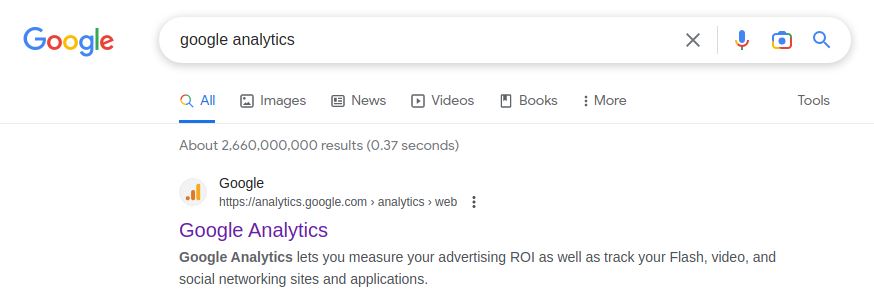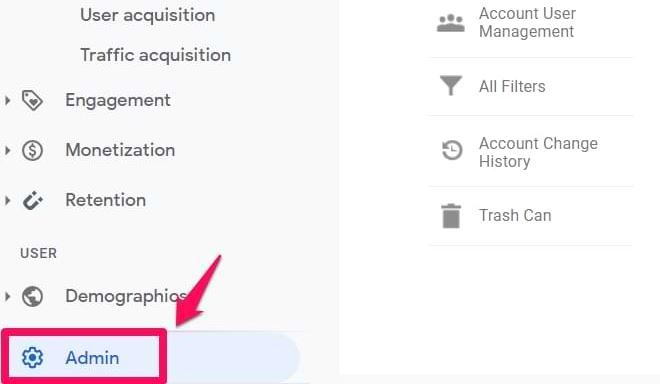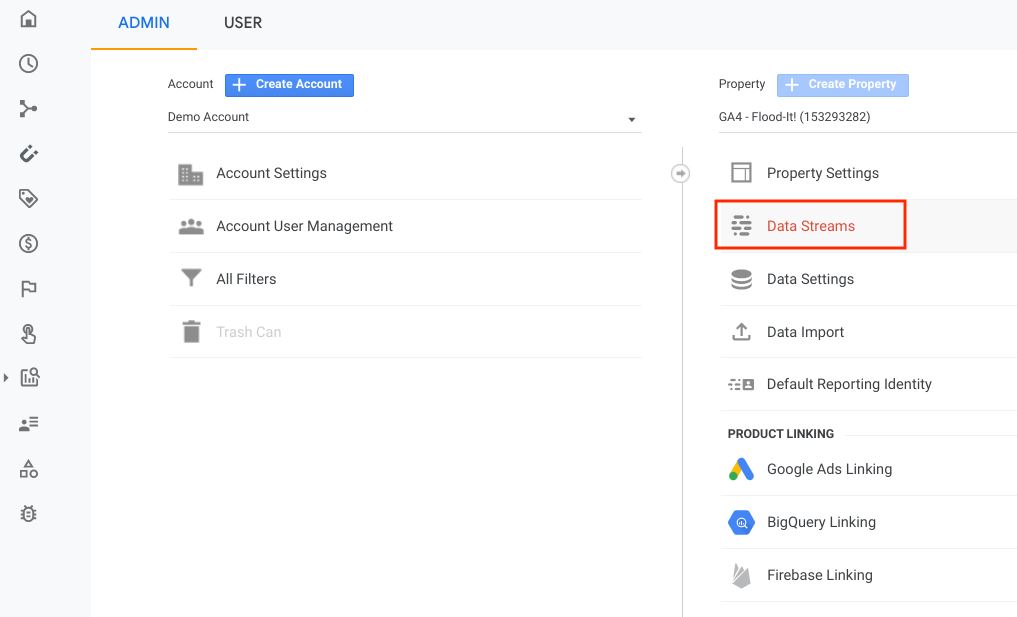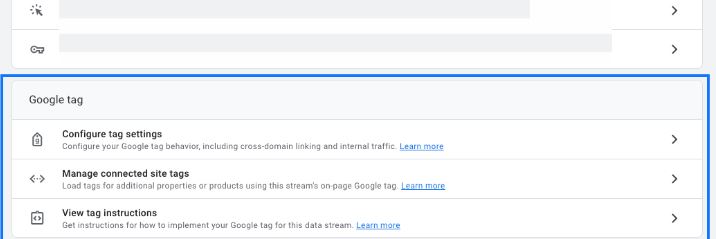
Introduction to Google Analytics Search Terms Report
The Google Analytics Search Terms Report is a powerful tool for advertisers to measure the effectiveness of their keyword targeting and optimize their search campaigns.
The report provides a list of search terms that people have used before seeing an ad, allowing advertisers to refine their keywords and ensure that their ads are reaching the right audience.
The search terms report is an essential component of any digital marketing strategy, as it allows advertisers to identify new search terms that have high potential and add them to their keyword targeting.
Briefly explaining what Google Analytics is
- Google Analytics is a powerful web analytics service that provides statistics and analytical tools for search engine optimization and marketing purposes.
- Google Analytics has as main objective to inform the owner of a website about the possible visits that has its website, in addition to other statistics that we will report throughout the article.
- Google Analytics helps businesses track and analyze the performance of their websites or applications, allowing them to gain valuable insights into their customers' behavior and preferences.
- Through Google Analytics, businesses can access a wide range of data that can help them improve their marketing strategies, increase their website's traffic, and boost their overall online presence. Additionally, Google Analytics is a free service, making it accessible to businesses of all sizes.
Benefits of using Google Analytics
One of the key benefits of using Google Analytics is that it helps businesses gain a better understanding of their customers' behavior and preferences.
With Google Analytics, businesses can track:
- The number of visitors to their website.
- The pages they visit.
- The amount of time they spend on each page.
- The effectiveness of their marketing campaigns.
- The sources of their website's traffic.
- The conversion rates of their campaigns
This information can help businesses optimize their website's content and design to better meet their customers' needs and preferences.
Features offered by Google Analytics
Google Analytics offers a wide range of features that can help businesses track and analyze their website's performance.
Some of the key features include:
- Custom reports.
- Dashboards.
- Alerts.
With these features, businesses can customize their analytics reports to fit their specific needs and goals.
Google Analytics offers advanced data visualization tools that enable businesses to convert their data into more comprehensive and appealing charts and graphs.
Other features of Google Analytics include goal tracking, machine learning, and data integration with other applications.
Overall, Google Analytics is an essential tool for businesses looking to improve their online presence and gain a better understanding of their customers' behavior and preferences.
Setting up Google Analytics
Setting up Google Analytics is a crucial step in tracking website performance and gaining insights into user behavior.
- The first step in the process is to create a Google Analytics account. To do this, we must have a Google Analytics account activated.
To have a Google Analytics account it is necessary to have a Google email account, and from there to access Google Analytics. - Once we have our Google email account created, we can access the Google Analytics account.
- We log in with our email inside our preferred web browser, search for Google Analytics in Google and access.
- On the Google Analytics welcome page, click on the welcome button and enter the configuration page.
- Within the configuration page we have to enter a descriptive account name with our company, project or website name. Also, in the lower options, we will select the options we want to share with Google.
- The next page is the Property Configuration page. On this page we will enter the name of our property or the name of our web site. We will also choose our time zone and currency.
- Clicking Next will take us to the Company Information page, where we must give approximate details of our company, or in the case of a single person, indicate it in the same way.
- When creating the property in Google Analytics we must accept the contract created by Google depending on the country we are in.
- After creating your account, the next step is to add a tracking code to your website. This code is essential for Google Analytics to track user activity on your website.
- To add the tracking code:
- Click on "Admin" at the bottom-left of the page.
- On the loaded page, in the Property menu click on "Data Streams".
- Within "Data Flow" we click on the name of our newly created Property.
- On the page that opens, at the bottom of the menu, click on "View tag instructions".
- We get a page where we can copy a Javascript code that we will place inside our web page. In any part of our web page. We simply have to edit our page in code and place the Google Analytics code before the tag called "</body>".
- Once the tracking code is installed, Google Analytics will start tracking website data and providing valuable insights into user behavior.
- Click on "Admin" at the bottom-left of the page.
Google Analitycs Home page
When we enter Google Analytics, in the left menu we can see several options:
- Home Page
- Reports
- Explore
- Advertising
- Admin
On the main page of Google analytics we can see several zones located from the top to the bottom of the page:
- At the top there is a graph with 4 options where we can see statistically the evolution of each option over time, according to the time frame we have chosen.
- Views
- New Users
- Number of Events
- Users
- On the right side of the graph we can see the current interaction of users on our website and their country of origin. If we click on the link below we can see exactly which page within our site the user is on.
- At the bottom we see the links within google analytics that we have Accessed recently.
- Custom Suggestions
Events, Goals, Funnels and Conversions in Google Analytics
One of the most important aspects of Google Analytics is setting up and tracking goals and conversions.
Goals and conversions provide valuable insights into user behavior and help measure the success of a website:
-
Google Analytics Events are user interactions with a website that are tracked and recorded in Google Analytics. These interactions can include clicks on buttons, form submissions, video plays, and more.
By tracking events, website owners can gain a deeper understanding of how users are interacting with their website and which elements are most engaging.
The importance of tracking events for website analysis cannot be overstated. Without event tracking, website owners would only have access to basic metrics such as pageviews and bounce rates.
By tracking events, website owners can gain a more detailed understanding of user behavior and make data-driven decisions to optimize their website.Setting up event tracking in Google Analytics requires a few steps. First, website owners must define the events they want to track and assign them a category, action, and label. This information is then used to create an event tracking code that is added to the website pages where the events occur.
Best practices for event tracking implementation include ensuring that event tracking code is properly installed on all relevant website pages, testing the code to ensure that events are being tracked accurately, and regularly reviewing event data to identify any issues or opportunities for optimization. - Goals in Google Analytics are specific user interactions that are tracked on a website.
They can be set up to track a wide range of actions, such as completing a purchase, filling out a form, or spending a certain amount of time on a page.
Setting up goals is important because it allows website owners to track user behavior and measure the success of their website.
There are four types of goals in Google Analytics:- Destination goals.
Destination goals track when a user reaches a specific page or URL on a website.
For example, a destination goal could be set up to track when a user reaches the "thank you" page after completing a purchase. - Duration goals.
Duration goals track how long a user spends on a website or a specific page. - Pages/screens per session goals.
Pages/screens per session goals track how many pages a user visits during a session - Event goals.
Event goals track specific user interactions, such as clicking a button or playing a video.
- Destination goals.
-
Conversions in Google Analytics refer to when a user completes a specific action that is valuable to the website owner.
Conversions can be macro or micro:-
Macro conversions are the primary goals of a website, such as completing a purchase or filling out a form.
-
Micro conversions are smaller actions that lead to a macro conversion, such as adding a product to a cart or signing up for a newsletter.
For example, a website owner could set up a conversion goal to track when a user completes a purchase.
They could also set up micro conversion goals to track when a user adds a product to their cart or signs up for a newsletter.
By tracking these goals, the website owner can identify areas where users are dropping off or not completing the desired actions, and optimize the website to improve conversions.
When setting up goals and conversions in Google Analytics, it is important to set realistic and relevant goals that align with the website's objectives.
Regularly reviewing and updating goals and conversions is also important to ensure they remain relevant and effective.
Tracking user behavior and optimizing the website for conversions is essential for improving website performance.
For example, a website owner could review their conversion data and identify that users are dropping off during the checkout process. They could then optimize the checkout process by reducing the number of steps or simplifying the form fields.
By tracking user behavior and optimizing the website for conversions, website owners can improve the user experience and increase conversions. -
-
Funnels in Google Analytics help you understand the customer journey and the stages of the sales funnel.
By setting up a funnel, you can track how users move from one stage to the next, and identify where they drop off or abandon the process.
To create a funnel, you'll first need to choose the appropriate funnel visualization report in Google Analytics.
From there, you can add steps to the funnel and assign values to each step to help you understand the impact of each stage on the overall conversion rate.
For example, if your funnel includes a product page, a shopping cart, and a checkout page, you might assign a higher value to the checkout page to indicate that this is the most important step in the process.
Accessing the Search Terms Report in Google Analytics
The Google Analytics Search Terms Report is a useful tool that shows you the keywords that people use to find your website on search engines. It can help you optimize your site for SEO, discover new content ideas, and understand your audience’s intent.
However, the Search Terms Report has changed significantly with the introduction of GA4, the latest version of Google Analytics. GA4 has a different user interface and reporting structure than Universal Analytics, the previous version.
If you want to access the Search Terms Report in GA4, you need to follow these steps:
- Go to your GA4 property and click on Acquisition in the left sidebar.
- Under Acquisition > Summary, click on View campaigns in Google Ads.
- You will see a table with the following columns: Search Term, Clicks, Conversions, Cost per Click, Cost, Cost per conversion,...
- You can use the filters and date range options at the top to customize your report.
The Search Terms Report is an essential tool for any advertiser looking to improve the effectiveness of their search campaigns. By providing valuable insights into the search terms that are driving traffic to your site, the report enables advertisers to refine their keyword targeting and optimize their campaigns for maximum impact.
Whether you're a seasoned digital marketer or just starting, the Search Terms Report in Google Analytics is a must-have tool for any successful search campaign.
Understanding the Data in Google Analytics Search Terms Report
The Search terms report helps advertisers identify new search terms that have high potential, allowing them to add them to their keyword list and optimize their advertising campaigns accordingly.
The report provides a comprehensive overview of various metrics, including clicks, impressions, click-through rate, and average position, allowing advertisers to analyze the performance of their keywords.
The search terms report also helps advertisers identify the top search terms driving traffic to their website.
By analyzing the top search terms, advertisers can gain insights into what content and topics their users are most interested in searching for.
Additionally, the report can help identify trends and patterns in search terms, allowing advertisers to adjust their advertising strategies accordingly.
The report provides many of the same metrics as the overview report but at the search term level, providing a more granular view of user behavior.
Another useful feature of the search terms report is the search terms insights tool, which analyzes the search terms where ads have appeared in the past 56 days, grouping them into themes and sub-themes to provide key insights into user behavior.
Additionally, Google Trends is a free tool that analyzes the popularity of Google search terms using real-time data, providing insights into what people are searching for and how interests are changing over time. By leveraging these tools, advertisers can gain a deeper understanding of their audience and optimize their advertising campaigns for maximum effectiveness.
Using Google Analytics Search Terms Report to Improve SEO and User Experience
By analyzing the search terms that trigger your ads, you can optimize your content for top search terms. This will help ensure that your website appears in relevant search results, increasing the chances of attracting qualified traffic.
Additionally, the search terms report can be used to identify new keyword opportunities that can be added to your keyword list. This can help expand your reach and attract new visitors to your website.
By utilizing the search terms report, you can improve your SEO efforts and ultimately drive more traffic to your website.
The search terms report can also help improve user experience based on user search behavior. By analyzing the search terms that users are using to find your website, you can gain insight into their intent and tailor your content to better meet their needs.
Tips on SEO and Online Business
Next Articles
Previous Articles




















